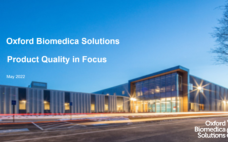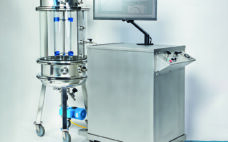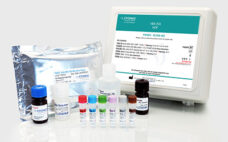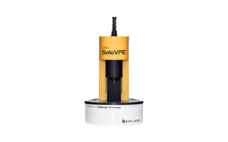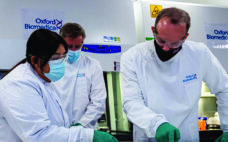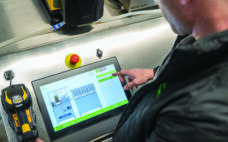This webcast features: Tim Kelly, CEO, Oxford Biomedica Solutions. It is now fully apparent that product quality is critical to the performance of gene therapy products. In turn, regulatory expectations have risen dramatically for the quality of the viral vectors that are used to deliver such therapies. That said, yields from viral-vector production processes tend to be much lower than those for conventional protein products. The ability to address all aspects of product quality while still achieving high vector output…
Sponsored Content
The Critical Role of Predictive Bioreactor Characterization in Pharmaceutical Process-based Upscaling
In bioreactors, microorganisms or cell cultures produce complex therapeutic proteins and other biopharmaceuticals. The industrial production of those active pharmaceutical ingredients usually involves a seed train: the cells are run through many cultivation systems, which become larger with each passage (Upstream Process). An adequate number of cells for the inoculation of large-scale production bioreactors of 10,000 liters or more is generated. A prominent example from the growing mammalian cell culture processing sector is the upstream production process of monoclonal antibodies.…
The Critical Role of Cell Culture Media Analysis in Cell and Gene Therapies Development
This webcast features: Graziella Piras, PhD, Bioprocessing Segment Director, 908 Devices. Unlike biotherapeutic proteins that benefit from decades of development and manufacturing experience, cell and gene therapies are still young. Producing these diverse therapeutics requires that various cells be used based on the specific application. Since various cells have different requirements, the medium used to culture them must be designed for optimal growth and/or productivity of each cell type. When the composition of the cell culture medium does not match…
The Impact of Protein Stability on Virus Filtration
Filtration of protein-based biologics is essential for minimizing viral contamination and ensuring product safety and high quality. The tendency of therapeutic monoclonal antibodies (MAbs) and recombinant proteins to aggregate under a number of conditions can complicate selection of a virus filter. An increasing demand for high concentration formulations creates additional challenges. When performing filterability studies and to ensure meaningful virus filter evaluations, downstream process scientists must address factors that can lead to aggregation. This special report on virus filtration by…
Host cell protein impurities in viral vector manufacturing: a critical quality attribute for product efficacy and safety
Viral vector manufacturing processes require rigorous analytics, including testing for process-related impurities such as host cell proteins (HCP), host cell DNA, growth media additives and enzymes used in viral vector purification processes [Cellular and Gene Therapy Guidances]. Even after multiple purification steps, significant levels of HCP impurities can be present. While low levels of most impurities can be inconsequential, patient safety demands that HCPs be eliminated or reduced to the lowest levels practical to prevent problems such as adverse immune…
Minimize Risk With Rapid At-Line Concentration Measurement in Downstream Bioprocessing Applications
This webcast features: Paul Mania, Bioanalytics Applications Specialist, Repligen. Traditional UV/Vis spectroscopy uses fixed pathlengths to measure different analytes, such as nucleic acids, proteins, and cells from biological samples. These samples are often limited in volume or highly concentrated, which presents various challenges. The CTech™ SoloVPE® System uses a patented variable pathlength technology (VPT) to accurately measure the targeted concentration of various analytes. The system measures concentrations without being dependent on sample volume or sample concentration, removing any dilution requirements,…
Partnerships Are Crucial to Getting Advanced Treatments to Market
New treatments and approaches for tackling serious diseases are being developed using cell and gene therapy (CGT). CGTs are adding a new dimension to the way patients with such conditions can be treated in modern healthcare. But these advanced treatments require complex research, development, and manufacturing processes. CGTs are related and to a degree interchangeable. However, gene therapies typically use some kind of genetic delivery system, (e.g., virus-based vectors) to treat a disease by replacing a malfunctioning gene or introducing…
Advancing Logistics for ATMP Manufacturing
Advanced therapy medicinal products (ATMPs) hold much potential for improving healthcare. They offer hope for treating or even curing patients. The biopharmaceutical industry has recognized the importance of making such therapies accessible to as many people as possible. To provide personalized ATMPs, biomanufacturers are shifting toward flexible, patient-centered production processes. A Paradigm Shift in ATMP Manufacturing Ex vivo cell and gene therapies are particularly promising approaches to personalized regenerative medicine. Thus, it is no surprise that the numbers of US…
Developing a Platform for Large-Scale Lentiviral Manufacture
This webcast features: Yiyu Dong, PhD, Associate Director of Viral Vector Process Technology Development (VVPTD), WuXi Advanced Therapies. Due to their capability for long-term transgene expression, large packaging capacity and ability to transduce postmitotic and quiescent cells, lentiviral vectors have become increasingly popular gene delivery tools for cell and gene therapies in recent years. However, capacity for lentiviral vector manufacture is a major industry bottleneck. WuXi Advanced Therapies has developed a lentiviral suspension manufacturing platform using OXGENE’s XLenti™ packaging plasmids.…
Ask the Expert: In-Line Concentration Measurement for Adaptive Control of Downstream Processes
In-line process analytical technologies (PATs) hold much promise for enhancing control of biopharmaceutical manufacturing processes and, in turn, increasing process quality and reproducibility. During a January 2022 presentation, Ramsey Shanbaky (associate director of bioprocess applications at Repligen) described how his company’s CTech FlowVPX system for in-line protein concentration measurement enhances monitoring of downstream processes. Shanbaky’s Presentation Scientists often use ultraviolet–visible spectroscopy (UV-vis) to measure protein concentration in a drug substance (DS) or product (DP). Most UV-vis instruments determine that by…

